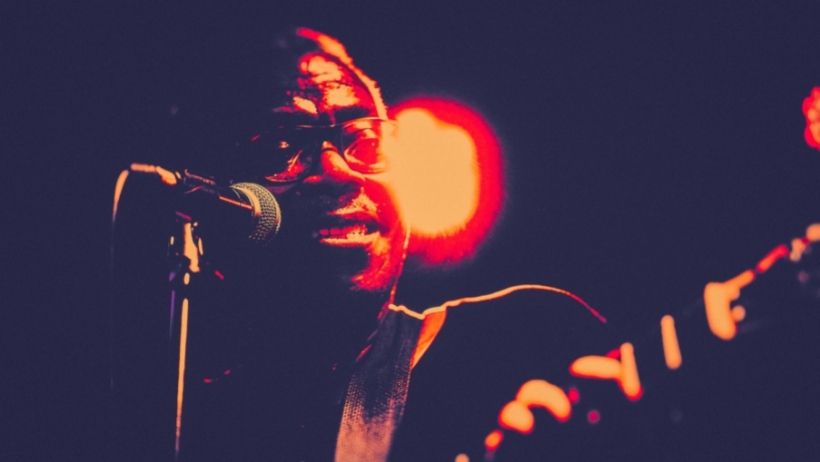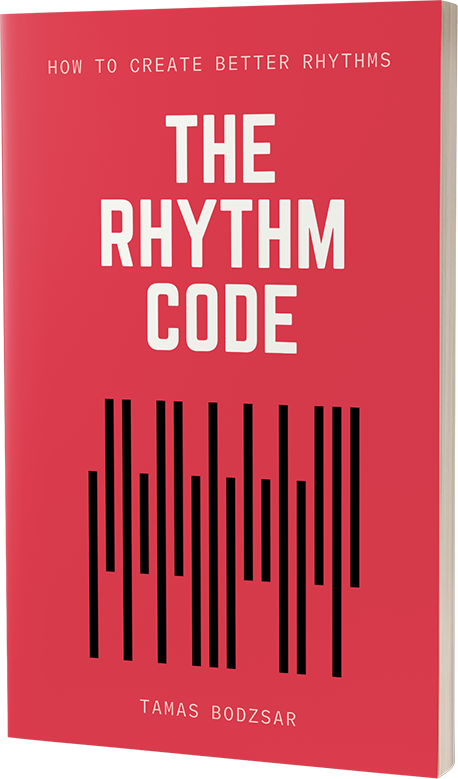
Funk is one of the coolest genres out there. It’s full of rich chords, exciting rhythm, groovy basslines, and nice arrangements. When we want to write a song in this genre, one of the most important things to consider is the chord progression. Funk music has a distinctive sound and one of the elements of this sound is the chords they use. So let’s see what chords are used in funk.
Rhythm
First of all, before we even go into more details about the chords, it’s important to be aware that the sound of funk is primarily determined by rhythm. In other words, the rhythm is more important than the chords. You can use any cool chords but if the rhythm is not right, it won’t sound like funk. On the other hand, you can use ANY chords, and with the right rhythm, it will become funk.
So what’s the solution? The easiest solution to create a great funk rhythm is to use the Rhythm Code™. What’s the Rhythm Code? It’s a hidden rhythmical system I discovered, and it is used in ALL genres, including jazz, pop, funk, EDM, rock. While different genres use the Rhythm Code to different degrees, funk is one of the genres where they exploit the Rhythm Code the most. Listen to any You can get the formula of the Rhythm Code from our songwriting course. In fact, I show examples of the Rhythm Code in funk songs from artists like James Brown in the course.
Blues chords
The sound of blues is deeply rooted in funk music. So besides rhythm, we can hear the distinctive sound of the blues in most funk songs. How do we create this blues sound? First of all, some of the song structures and chord progressions are similar or exactly the same as a typical 12-bar blues chord progression.
Secondly, in blues, they use dominant seventh chords on the tonic. For example, if the song is in the key of C-major, the tonic I. chord will be C7 (C – E – G – Bb). This might sound weird because traditionally the tonic chord can be only a major triad or a major seventh chord (C – E – G – B). But the dominant seventh chord is one of the things that makes the distinctive blues sound.
A typical 12-bar blues chord progression is: C7 – C7 – C7 – C7 – F7 – F7 – C7 – C7 – G7 – F7 – C7 – C7. But sometimes, in many funk songs, there aren’t this many chords. Sometimes it’s just a static C7 for a long time. For example, in the song “Get Up” by James Brown, there is really not much happening with the chords. It’s an Eb7 chord played for a long time. What really makes these kinds of songs interesting is the rhythm and the arrangement.
And if it’s not weird enough, on top of that, they use the blues scale in the melody. So even though the chord is a C7, which contains the major triad chord tone (the note E), the melody uses the blues scale C – Eb – F – F# – G – Bb. If you are not familiar with the blues, you might freak out now. How is it possible to play an Eb note on a C-major chord? Well, this is exactly what creates the blues sound.
A funk song can have a minor tonic too, not just major. For example, the song “Soul Power” by James Brown is using a static Dm7 chord for a long period of time. In this case, the melody is using the blues scale D – F – G – G# – A – C.
Smooth chords
Soul is kind of like a version of funk but with more sophisticated chord progressions. If you write a song like that, you can use more chords, especially jazzy smooth chords. What are smooth chords? Songs that are mostly using major seventh (maj7) and minor seventh (m7) chords sound smooth. For example, songs from Jamiroquai. Although if you want to make chord progressions like Jamiroquai, you need to know how to use chord substitutions. Here is one example, the song “Seven Days In Sunny June”:
Bm7 – F#m7 – Bm7 – F#m7 – Fmaj7 – Gmaj7 – Amaj7 – Dsus7
Another good example of a smooth chord progression is from the song “Happy” by Pharrell Williams. Interestingly, he uses a typical bluesy sound in the verse. The melody is using the blues scale F – Ab – Bb- B – C – Eb, while the chord is a dominant seventh chord F7. Then in the chorus, he uses a typical smooth chord progression:
Dbmaj7 – Cm7 – Cm7 – F
If you want to learn how to make these smooth chord progressions, you need to learn how to use chord substitutions. I created a formula for this, and you can learn it from the course. With chord substitutions, you can use literally all 12 notes as root notes in any key.
Extended chords
While seventh chords contain only the root, the third, the fifth, and the seventh chord notes, extended chords are the 9, 11, and 13 chords. Many of the funk songs use not only seventh chords but extended chords too. This makes the song sound even jazzier. For example, in the song “Get Up” by James Brown, the guitarist is actually playing an Eb9 chord (Eb – G – Bb – Db – F), and sometimes he plays the note C, which is the 13 chord tone.
There are really no strict rules when you can use extended chords in a song, but if you are using seventh chords, you can probably use extended chords. But keep in mind that it doesn’t work in all situations. You really need to follow your ears. If it feels good, sounds good, then you can use it.
Shell chords
Using shell chords can give you an even more professional sound. And using shell chords is inevitable if there is a guitar in the song. Because there is a limit to how many chord tones a guitarist can play at once. What are shell chords? When it comes to chords, no matter what chords we are talking about, there are only three important chord tones. The root, the third, and the seventh. Everything else is optional. But if you are playing in a band, the root is always played by the bass. So a guitarist really only needs to play the two essential chord tones, the third and the seventh, and he can add other jazz chord tones like the 9, the 11, or the 13. For example, if you want to play an Eb13 chord on the guitar, the bass is playing the root (Eb), and the guitar can play the chord tones G – Db – F – Ab – C.
The secret pattern behind successful songs
Get the eBook for $4.99

